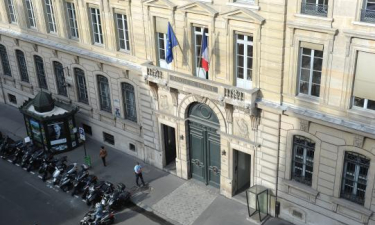Monetary policy is helping the economy to emerge from the crisis
After the major recession witnessed in 2020, economic activity recovered sharply in 2021 with GDP expanding by 7% in France (and by 5.2% in the euro area). The recovery was fuelled initially by industry then by market services. However, it was also accompanied by price pressures: inflation rose from 0.8% in January 2021 to 3.4% in December, driven by the surge in energy prices – which had fallen sharply in 2020 – and by supply chain disruptions.
Monetary policy continued to support the economy in 2021. Financing conditions remained favourable for corporate loans, with the average interest rate standing at 1.27% at end-December 2021 and total outstanding loans rising by 3.6% over the year. Corporate finances appeared solid while households boosted their financial savings by around EUR 170 billion between 2020 and 2021.
2021 was marked by the Eurosystem monetary policy strategy review. The price stability objective is now defined as a symmetric inflation target of 2% over the medium term. The calculation of inflation will take greater account of housing costs to make it more representative. Monetary policy will also take into consideration the risks generated by climate change.
On 1 January 2022, 20 years after the introduction of the euro in its physical form, the Banque de France was still the leading manufacturer of euro banknotes in the Eurosystem. In December 2021, the European Central Bank launched a project to redesign euro notes, and will invite contributions from the public before the Governing Council makes its final decision in 2024.
Mitigating today's risks and anticipating tomorrow's challenges
The Banque de France, together with the Haut Conseil de stabilité financière (HCSF – High Council for Financial Stability), is responsible for ensuring the smooth functioning of the financial system. The Autorité de contrôle prudentiel et de résolution (ACPR – Prudential Supervision and Resolution Authority), an administrative authority attached to the Banque de France, also contributes to this task by supervising banks and insurers and protecting their customers. In 2021, French banks reported improvements in their performance, solvency and liquidity, as testified by the strong results they obtained in the European Banking Authority’s resilience tests. French insurers, for their part, enjoy a strong solvency position, but it could be negatively affected by the persistently low interest rate environment.
2021 was marked by a stabilisation of short-term vulnerabilities and a confirmation of the medium and long-term structural risks. At the end of 2021, a number of stock market indicators were pointing to a probable overvaluation of prices, raising the threat of a brutal correction in asset markets. Non-financial corporations’ gross debt stabilised in 2021 and government support measures helped to avert a rise in business failures. Although households had high levels of debt, their financial position appeared sound overall and the number of households in difficulty declined.
The Banque de France is helping to find responses to the structural changes in the financial system. It is preparing for the possible issuance of a central bank digital currency (CBDC) to accompany the digitalisation of payments and innovation. It is also at the forefront in tackling the challenge of the climate transition and is putting together numerous proposals. The Central Banks and Supervisors Network for Greening the Financial System (NGFS), which was set up at the Banque de France’s initiative in 2017 with seven other central banks, now counts some one hundred members.
The Banque de France is helping households and businesses emerge from the crisis
The Banque de France has played a decisive role in France’s crisis-exit strategy. Its branch network has relayed information to businesses on the available government support mechanisms, and each branch uses the data at its disposal to identify and assist businesses in financial difficulty. In 2021, the Credit Mediation service helped to safeguard 1,694 businesses and save over 21,000 jobs. The Banque de France rating system,which rates over 300,000 businesses, was also updated to take account of the economic and financial situation.
Our branch network strives to ensure that everyone has access to basic financial services. It guarantees individuals the right to a basic bank account. In 2021, it responded to more than 1.3 million requests from the public for information on banking inclusion and banking practices. Banque de France teams are on hand in each of France’s departments to help households get out of excess debt. Although the number of applications for debt resolution increased again slightly in 2021, it remained 45% lower than in 2015.
As the national steering body for France’s financial and economic education strategy, the Banque de France conducts awareness-raising initiatives to ensure all citizens have the basic knowledge they need to make informed financial decisions. It manages the online information portals Mes questions d’argent and Mes questions d’entrepreneur, and works with teachers and trainers to target young people, the financially vulnerable and entrepreneurs.
The Banque de France provides financial services to the state and to Europe. It manages the French Treasury’s account. In 2021, it was selected by the European Commission to manage the issuance of short-term debt securities to finance the NextGenerationEU recovery plan.
